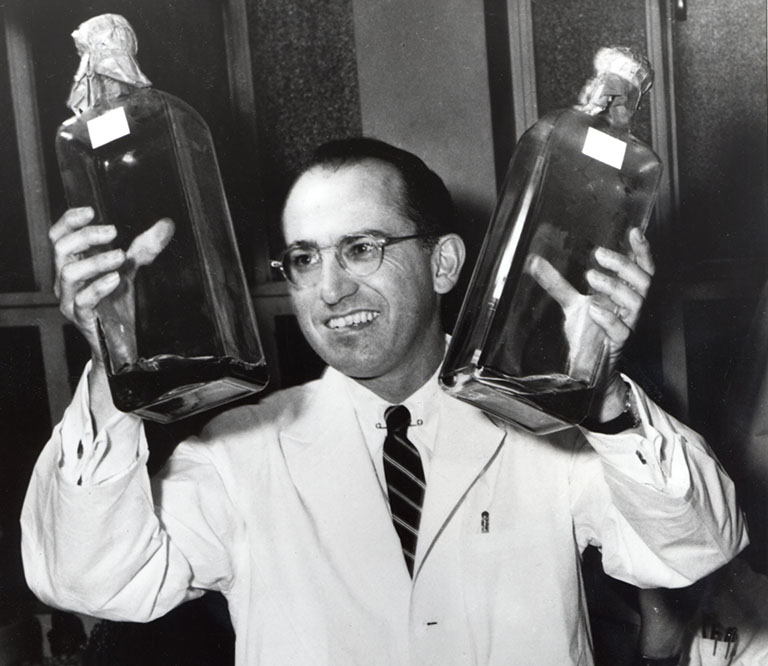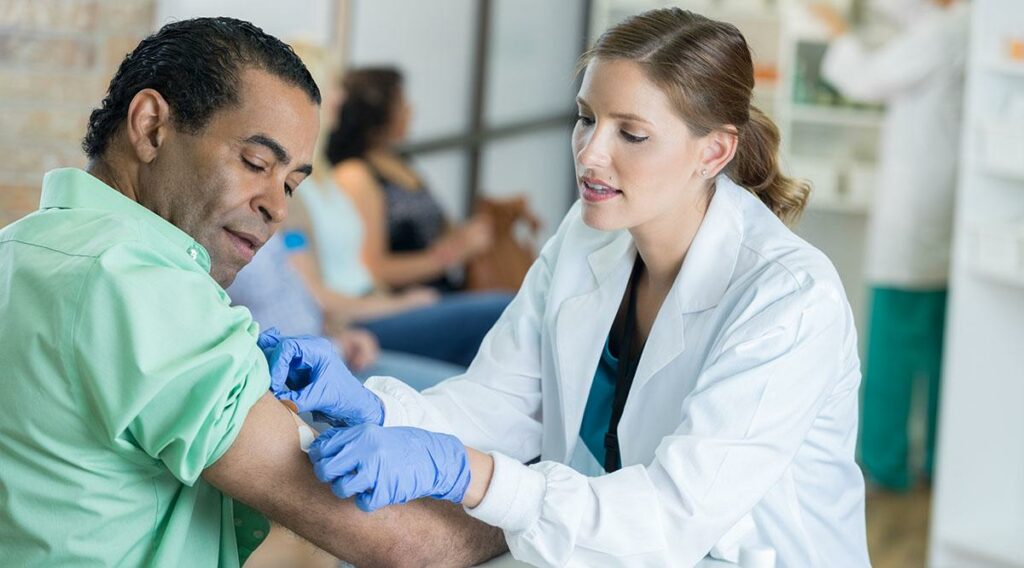A viral disease spreads across the globe, causing debilitating illness and death in numbers that mount by the day. Scientists race to develop a vaccine as panic grows, and within a year, millions of Americans get inoculated. The scourge recedes.

Except for those who get one of the 120,000 doses that accidentally contain the live virus. Some 40,000 inoculated children contract a mild form of the disease. Dozens more children get stricken by the paralysis that the vaccine was designed to prevent, as do over 100 other people who pick up the virus from the inoculated children. Ten of them die.
Such tragic errors from inoculations against disease — this one from the polio vaccine developed by Jonas Salk, MD, in the 1950s, one of the most successful immunizations in history — help to explain why an anxious world must wait up to two years for a vaccination to shield people from the potentially fatal novel coronavirus.
“We are moving as fast as humanly possible,” says research scientist Brooke Fiala during a break from working on a vaccine at the University of Washington’s (UW) Institute for Protein Design.
Yet bringing a vaccine from lab to public deployment proceeds at a glacial pace, and it’s a costly expedition. “From the creation of the idea to having a marketable vaccine is usually seven to 10 years or more, and about 1 billion U.S. dollars,” says Gregory A. Poland, MD, director of the Mayo Vaccine Research Group.
That’s by design: the design of human biology and procedures built to minimize harm.
“The basic history lesson when it comes to vaccines and immunization is that there always has been a risk and there always will be a risk,” says David S. Jones, PhD, the A. Bernard Ackerman professor of the culture of medicine at Harvard University.
Looking at the risks and the steps to mitigate them sheds light on some of the factors behind the long, expensive process.
 ____________________________________________________
____________________________________________________
Patrick Boyle is a senior staff writer.
The Association of American Medical Colleges leads and serves the academic medicine community to improve the health of people everywhere. Founded in 1876 and based in Washington, D.C., the AAMC is a not-for-profit association dedicated to transforming health through medical education, health care, medical research, and community collaborations.